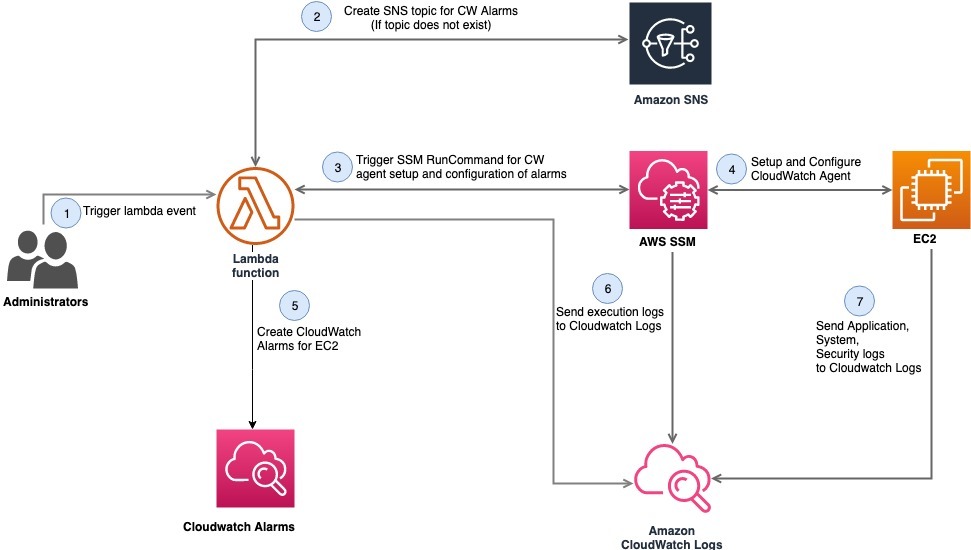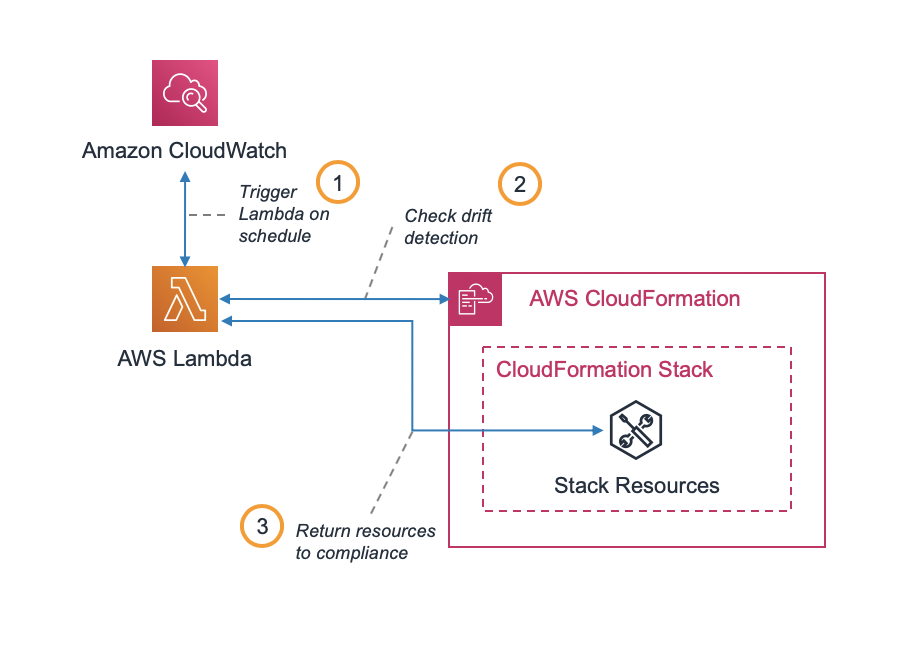AWS Cloud Operations Blog
Tag: Automation
Launch a standardized DevOps pipeline to deploy containerized applications using AWS Service Catalog
As companies implement DevOps practices, they find that standardizing the deployment of the continuous integration and continuous deployment (CI/CD) pipelines is increasingly important. Many end users and developers do not have the ability or time to create their own CI/CD pipelines and processes from scratch for each new project. By using AWS Service Catalog, organizations […]
Customizing account configuration with AWS Control Tower lifecycle events
In this blog post, we show how to customize the networking configuration in an AWS account. For example by deleting the default VPCs in all AWS Regions, using AWS Resource Access Manager to share the appropriate VPC subnets and using AWS Firewall Manager to apply security groups to VPCs in the account.
Automating Amazon CloudWatch Alarms with AWS Systems Manager
Amazon CloudWatch is a monitoring and observability service built for DevOps engineers, developers, Site Reliability Engineers (SRE), and IT managers. CloudWatch provides you with data and actionable insights to monitor your applications, respond to system-wide performance changes, optimize resource utilization, and get a unified view of operational health. Are you looking for an automated way […]
VPC Flow Log automation using AWS Control Tower LifeCycle
In this blog post, I show you how to expand AWS Control Tower centralized logging strategy to cover Amazon VPC Flow Logs. Using this solution, you can manage VPC Flow Logs across multiple accounts with self-service automation and periodic consistency check.
Implement automatic drift remediation for AWS CloudFormation using Amazon CloudWatch and AWS Lambda
“Stack drift” is a common occurrence for organizations using AWS CloudFormation, and remediating stack drift represents a persistent and tedious challenge for organizations managing critical infrastructure with CloudFormation stacks. Stack drift occurs when the actual configuration of an infrastructure resource differs from its expected configuration. Typically, this is caused by users editing resources directly by […]
Keeping Ansible effortless with AWS Systems Manager
Ansible is a powerful tool because it lets you handle many complicated tasks with minimal effort. Some time ago, I published running Ansible playbooks using Systems Manager blog when the first version of the AWS Systems Manager (SSM) document was released, which enabled support for Ansible. In that blog, I discussed the tight integration of […]
Software patching with AWS Systems Manager
Cloud computing adoption has been rapidly increasing with enterprises around the globe, opting for various migration patterns during their cloud journey. Taking monolithic legacy applications as-is and moving them to the cloud, is an approach also known as “lift-and-shift,” and is one of the main drivers for cloud migration. As customers become more knowledgeable about […]
Implementing Serverless Transit Network Orchestrator (STNO) in AWS Control Tower
Introduction Many of the customers that we have worked with are using advanced network architectures in AWS for multi-VPC and multi-account architectures. Placing workloads into separate Amazon Virtual Private Clouds (VPCs) has several advantages, chief among them isolating sensitive workloads and allowing teams to innovate without fear of impacting other systems. Many companies are taking […]
Using State Manager over cfn-init in CloudFormation and its benefits
Introduction If you have deployed Amazon Elastic Compute Cloud (EC2) instances via AWS CloudFormation, you most likely want to install software or configure the operating system of the instance. To accomplish this, you may have used cfn-init, one of the CloudFormation helper scripts available to AWS customers since February 2012. However, since that time AWS […]
Automate RDS Aurora Snapshots for disaster recovery
It is important to have a well-defined proactive disaster recovery strategy for efficient and uninterrupted flow of data across an organization. This applies to all components of your application architecture, including the database layer. While Amazon Aurora database clusters are fault-tolerant and highly available by design, for disaster recovery use cases, customers prefer to keep […]









